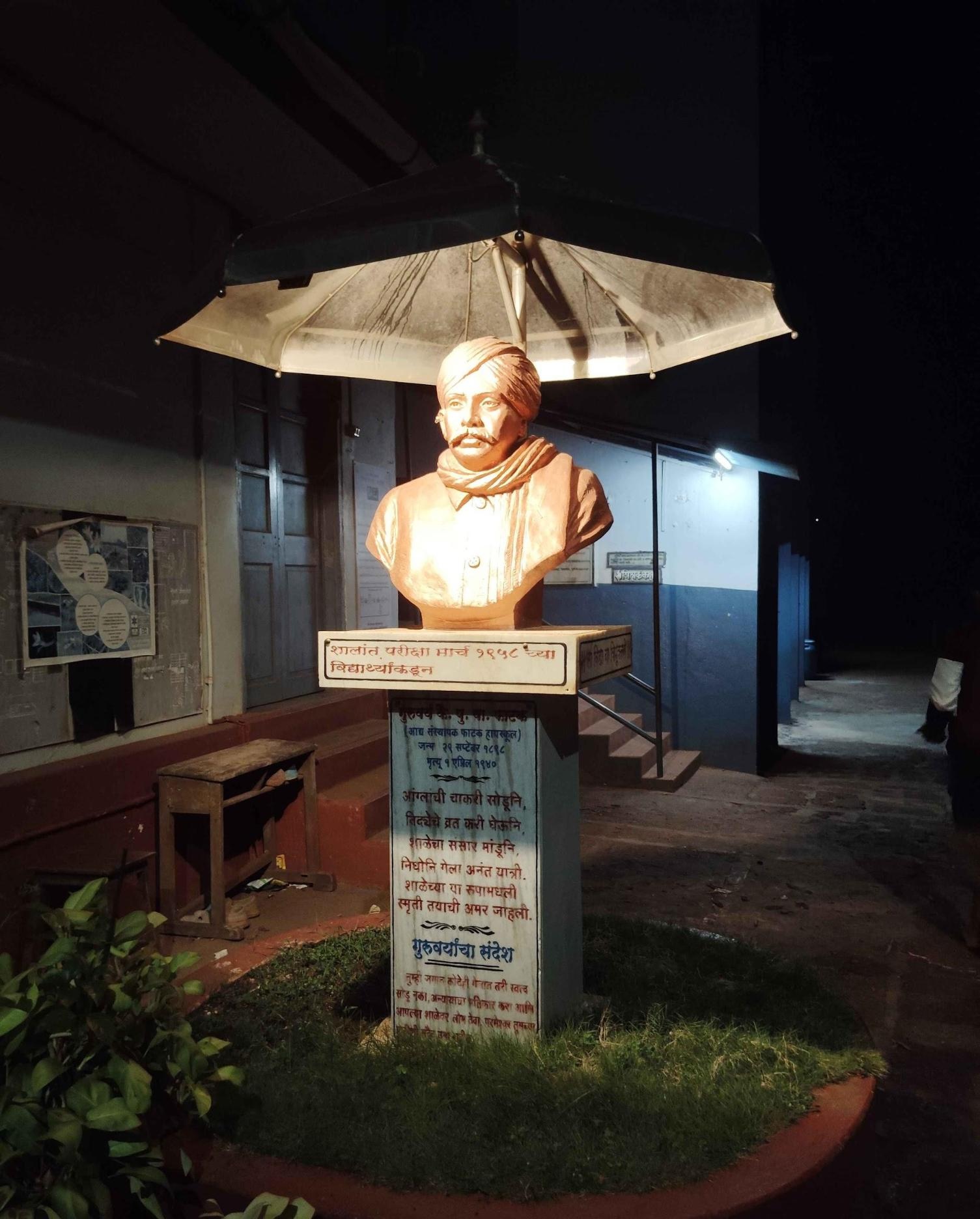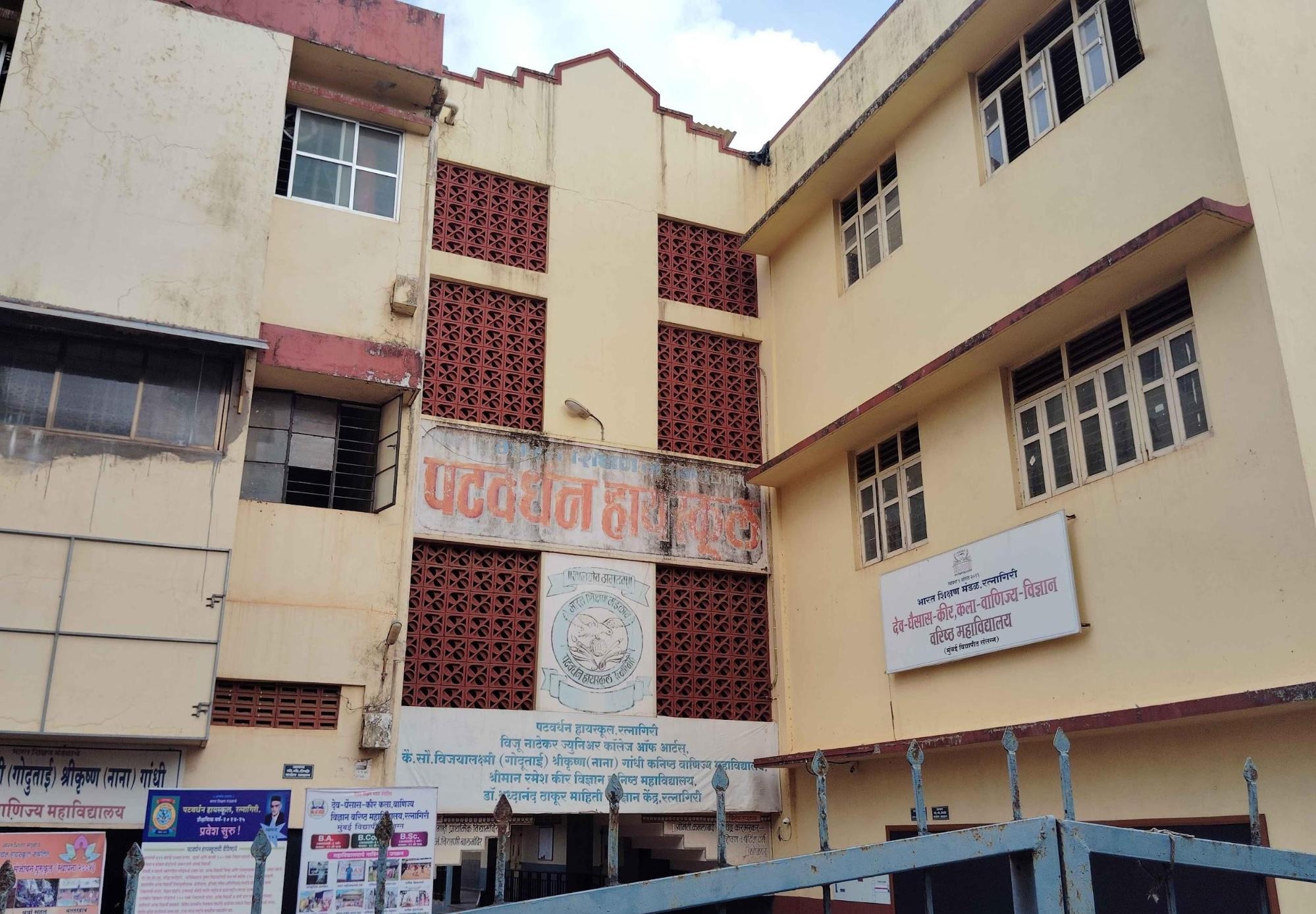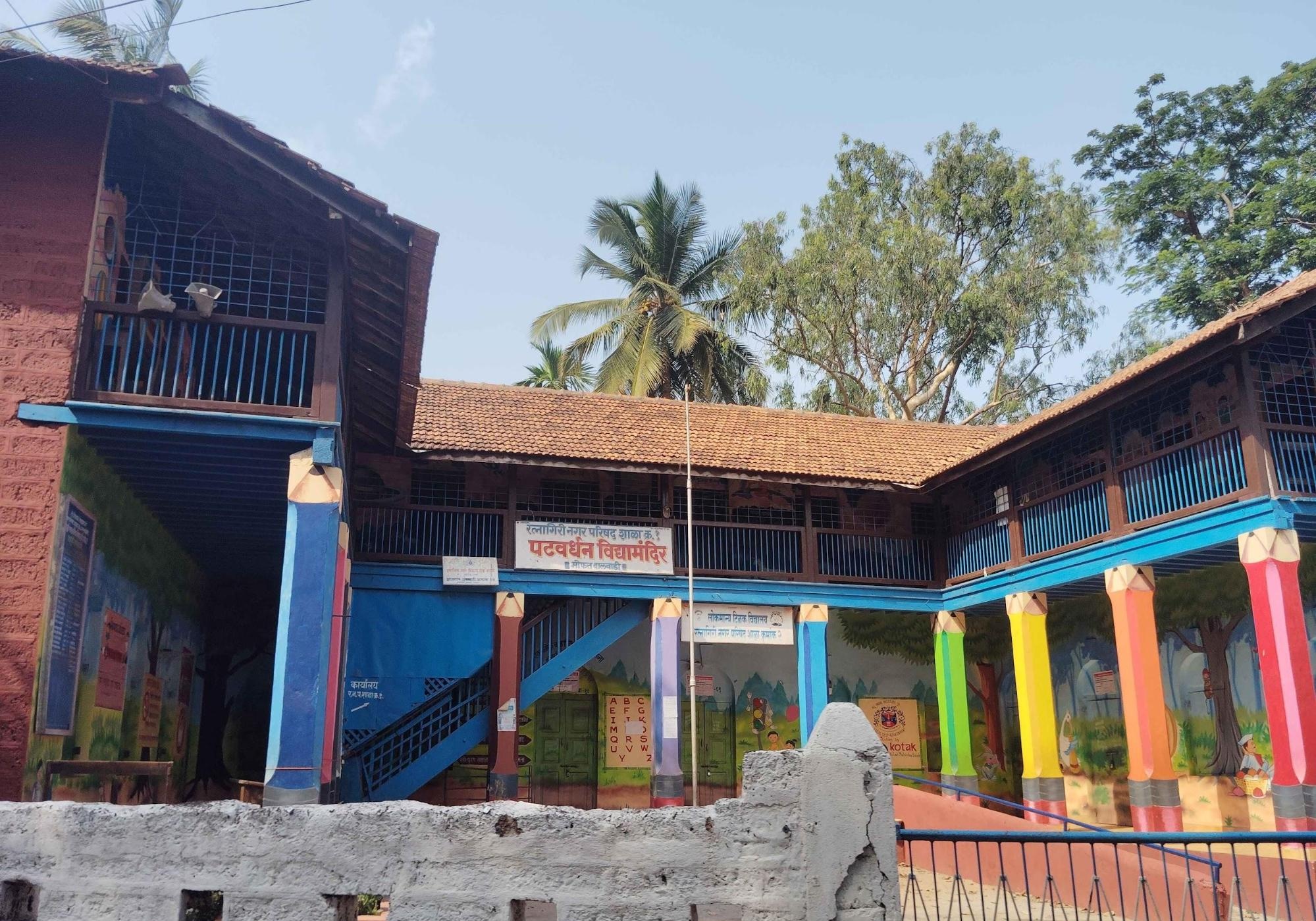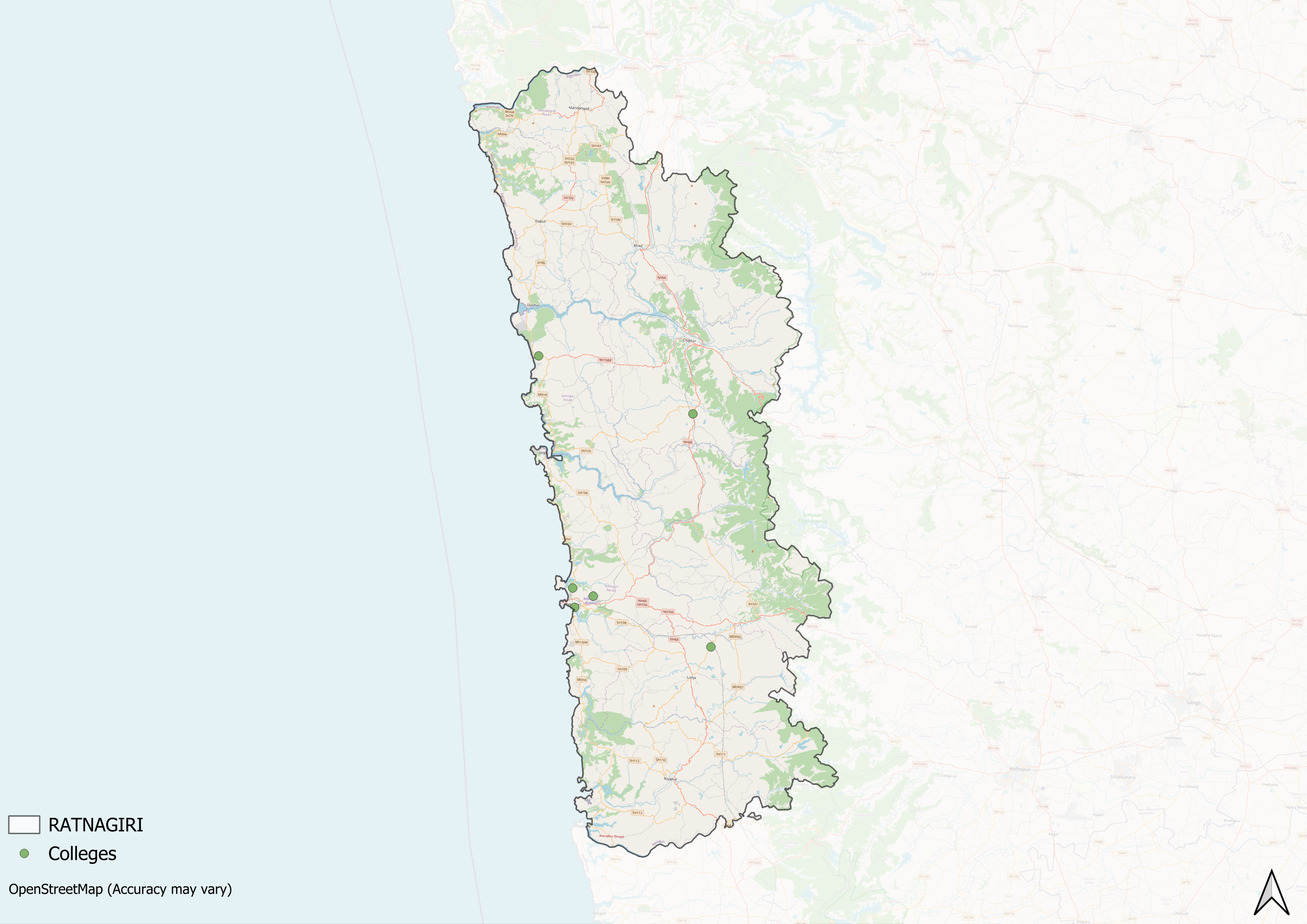Contents
- Early History
- Colonial History
- Local Figures & Organizations
- Purshottam Vasudeo Phatak
- Shri Keshvrao Patwardhan
- Ratnagiri Education Society and Sangameshwar Education Society
- Post-Independence Era and Contemporary Educational Infrastructure
- Primary & Secondary Education
- Institutions of Higher Learning
- Ratnagiri Sub Center, Mumbai University
- Dr. Balasaheb Sawant Kokan Krushi Vidyapeeth, Dapoli
- Graphs
- Enrollment and Dropout Rate
- A. Student Enrollment Numbers
- B. Student Enrollment (Class-Wise)
- C. Student Enrollment (Gender-Wise)
- D. Student Enrollment (By School Management Type)
- E. Drop Out Rate (By Schooling Level)
- F. Drop Out Rate (By Gender)
- Schools
- A. No. of Schools
- B. No. of Schools (Filtered by Gender Mix)
- C. No. of Schools (By School Management Type)
- Teachers
- A. No. of Teachers
- B. No. of Teachers (By School Management Type)
- C. No. of Teachers (Male vs Female)
- D. Education Level of Teachers
- Sources
RATNAGIRI
Education
Last updated on 9 July 2025. Help us improve the information on this page by clicking on suggest edits or writing to us.
The educational framework of Ratnagiri aligns with the broader structure of the Indian education system, encompassing pre-primary, primary, secondary, and higher education. By the 19th century, the introduction of the Western education framework in the district changed its educational landscape. British administrators and missionaries became actively involved in shaping education in the region.
Still, even as colonial influences grew, the early 20th century saw a wave of local initiatives; its existence indicated an increasing public awareness regarding the importance of education. Local communities took charge of education, a movement that carried into the post-independence era, shaping the district’s educational landscape in lasting ways.
Early History
The documented history of education in Ratnagiri can be traced back to the 19th century. Before this era, information about educational centers in the district was sparse due to limited historical records. However, this does not imply that formal education was completely absent in the district. According to the district colonial Gazetteer (1880), before the advent of the British education system, village schools, often privately run, played a central role and were primarily managed by Shenvis or Chitpavan Brahmans in the district. These institutions functioned as important centres of learning.
In this traditional system, students paid fees in cash or grain, and teaching was closely tied to local customs and religious practices. Education typically began with a ritual invocation of Saraswati, the Devi of knowledge, and offerings to the teacher. The curriculum focused on practical skills such as arithmetic, the Modi script, and Marathi. Mornings began with the singing of Bhupavalis, hymns dedicated to Saraswati and Ganpati. Classes were conducted in Mandirs, teachers’ verandahs, or homes. Interestingly, before the establishment of an all-girls school within the district in 1865, the Gazetteer mentions that a few girls would attend these village schools.
Colonial History
With the establishment of British rule in the district, government schools were established in Ratnagiri, and missionaries also set up educational institutions. In the 20th century, it appears that the focus was predominantly on expanding primary and secondary education across the district. Most schools used Marathi as the medium of instruction, though some offered classes in English, Sanskrit, and Urdu.
Local Figures & Organizations
While entities from the West played a significant role in shaping the educational landscape of Ratnagiri, local figures and organizations also emerged as key contributors. Many of them established institutions that continue to shape education in the district today, alongside community-led organizations that have played a lasting role in its development.
Purshottam Vasudeo Phatak
In the early 20th century, Purushottam Vasudeo Phatak, popularly known as Phatak Guruji, founded the New Education Society and established a high school in Ratnagiri. Despite limited resources and initial public indifference, Phatak and his colleagues kept the institution running through persistent efforts.

By 1939–40, the school presented its first batch of students for the matriculation examination, all of whom passed. Phatak Guruji passed away that same year. The school, now operating as a semi-English medium institution, continues to honour his legacy.
Shri Keshvrao Patwardhan
In 1902, Shri Keshavrao Patwardhan, along with relatives and supporters, established the Private Middle School in Ratnagiri. Known for its high academic standards and discipline, the school quickly gained popularity. It operated from rented buildings until moving to a permanent location. Renamed Patwardhan Middle School in 1908 and later Patwardhan High School in 1935, it introduced English instruction from the 7th standard onwards.

To manage financial and administrative challenges, the Bharat Shikshan Mandal was formed in 1947. In 1952, the Patwardhan brothers, Shankarrao and Achyutrao, formally transferred management of the school to the Mandal. The institution, now known as Patwardhan Vidyamandir, continues to serve the educational needs of the district.

Ratnagiri Education Society and Sangameshwar Education Society
The Ratnagiri Education Society was established in 1933 through the efforts of Advocate J.V. Joshi (also known as Baburav Joshi) and Mrs. Malatibai Joshi. Influenced by the ideas of educational reformer Dhondo Keshav Karve, the couple played a leading role in promoting education in the Konkan region. Their work began with the founding of Mahila Vidyalaya in 1925, a girls’ school where Malatibai Joshi taught and later received national recognition from the President of India for her contributions to teaching.

Under the Ratnagiri Education Society, institutions such as the R.P. Gogate College of Arts and Science and the R.V. Joglekar College of Commerce were later established in the city of Ratnagiri. These colleges have since expanded to offer undergraduate and postgraduate programs across Arts, Science, and Commerce streams.
Founded in 1940, the Sangameshwar Education Society established the New English School and Junior College in Kasba, Sangameshwar. This co-educational institution offers classes from 5th to 12th standard and provides instruction in both Marathi and English mediums. It has served as a prominent centre of secondary education for students in the surrounding areas and continues to play an active role in the region’s educational landscape.
Post-Independence Era and Contemporary Educational Infrastructure
Following India's independence, the education system in Ratnagiri underwent major transformations. The introduction of structured education levels: pre-primary, primary, secondary, and higher education, and the implementation of National Education Policies heavily shaped the educational landscape of the district. Over the years, the education sector has developed with contributions from both government-funded institutions and private organizations. Additionally, Educational boards were also introduced, each offering distinct curricula and standards, providing students with more choices.
Primary & Secondary Education
During the colonial period, both public and private efforts in education primarily focused on primary and secondary schooling, as indicated by data from district gazetteers across Maharashtra. Higher education remained underdeveloped in most districts, including Ratnagiri, with gradual improvements over time. While basic infrastructure for primary and secondary education existed, its expansion was closely tied to increasing enrollment and greater involvement of local figures.

Today, this expansion is evident in the widespread presence of schools across various wards of Ratnagiri, with available data reflecting the steady growth of educational institutions in both urban and rural parts of the district.
Institutions of Higher Learning
Perhaps one of the most notable changes in Ratnagiri’s educational landscape is tied to the establishment of higher education institutions. While primary and secondary schooling expanded steadily, opportunities for advanced education remained limited for much of the district’s history. Over time, local leaders and organizations played a crucial role in addressing this gap, leading to the creation of several colleges. As a result, many institutions in the district today are privately managed, semi-private, or autonomous.
Ratnagiri Sub Center, Mumbai University
The University of Mumbai established its Ratnagiri Sub-Centre on 5 September 1989 to support the academic and administrative needs of students in the Konkan region. The Sub-Centre was created with the objective of decentralizing student services and extending access to higher education in coastal Maharashtra.
Initially housed at a B.Ed. College near the Ratnagiri bus stand, the Sub-Centre was later moved to the Gogate-Joglekar College campus. It began by offering a limited number of diploma courses, with formal academic activities inaugurated at Thibaw Palace by Manohar Joshi, then Chief Minister of Maharashtra.
In the early 2000s, the University acquired 13 acres of land in Mirjole, Ratnagiri, and shifted the Sub-Centre to this permanent campus. The centre currently offers a range of academic programs, including B.A., B.Com., M.A., M.Com., and M.A./M.Sc. in Mathematics through distance education. On-site postgraduate programs include M.Sc. degrees in Oceanography, Environmental Sciences, and Chemistry.
Dr. Balasaheb Sawant Kokan Krushi Vidyapeeth, Dapoli
Dr. Balasaheb Sawant Konkan Krishi Vidyapeeth (DBSKKV) is an agricultural university located in Dapoli, Ratnagiri district. It was established in 1972 by the Government of Maharashtra as Konkan Krishi Vidyapeeth and was renamed in 2001 in honour of Dr. Balasaheb Sawant.

In addition to these institutions, a number of centres for higher education operate throughout the district, which offer programmes across various disciplines. While the landscape of higher education has broadened significantly since independence, disparities in access, particularly along geographic lines, remain evident.
Graphs
Enrollment and Dropout Rate
Schools
Teachers
Sources
Gazetteer of the Bombay Presidency. 1880. Ratnagiri and Savantvadi. Printed at the Government Central Press.
Government Jajwalyan College, Ratanpur. “History.” Accessed March 18, 2025. Government Jajwalyan College, Ratanpur, Chhattisgarh.
RP Gogate College Of Arts and Science and RV Jogalekar College of Commerce. Gjcrtn.an.inhttps://gjcrtn.ac.in/history/
Last updated on 9 July 2025. Help us improve the information on this page by clicking on suggest edits or writing to us.